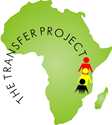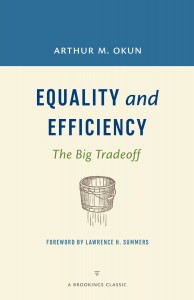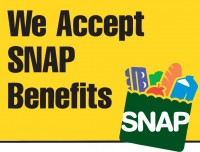 Yes, Jesus warned us of the persistence of poverty, but we can do better here in Rochester. There is renewed energy directed at the issue, both here and in the nation. The Poverty Task Force announced by Governor Cuomo will continue to focus attention and, hopefully, resources on the problem.
Yes, Jesus warned us of the persistence of poverty, but we can do better here in Rochester. There is renewed energy directed at the issue, both here and in the nation. The Poverty Task Force announced by Governor Cuomo will continue to focus attention and, hopefully, resources on the problem.
Ah, but what to do? Several of my colleagues at CGR recently completed a global scan of anti-poverty programs. And they concluded that there aren’t a lot of new ideas out there, although size and execution of established programs can be improved (e.g. the Earned Income Tax Credit, economists’ favorite).
 The report does mention experiments with a radical notion—simply giving people money. This isn’t so new. That’s how we tackled poverty among the elderly. We think of Social Security as forced savings (“you’re getting your own money back”), but for decades we paid out a lot more money than recipients had contributed. The Urban Institute estimated that single men who retired in 1980 got back twice what they contributed. Single earner couples quadrupled their contribution. The “return on investment” for other family configurations fell in between. Things have changed: On balance, 2011 retirees are just breaking even. Two earner couples get about 10% less than they put in while single earner couples still do the best, getting 50% more. (http://www.urban.org/publications/412281.html).
The report does mention experiments with a radical notion—simply giving people money. This isn’t so new. That’s how we tackled poverty among the elderly. We think of Social Security as forced savings (“you’re getting your own money back”), but for decades we paid out a lot more money than recipients had contributed. The Urban Institute estimated that single men who retired in 1980 got back twice what they contributed. Single earner couples quadrupled their contribution. The “return on investment” for other family configurations fell in between. Things have changed: On balance, 2011 retirees are just breaking even. Two earner couples get about 10% less than they put in while single earner couples still do the best, getting 50% more. (http://www.urban.org/publications/412281.html).
Giving money to the elderly worked. In 1959, over a third of older Americans were poor. While Social Security isn’t the only factor, only about 10% of the aged were poor in 2013.
 Could we win a few more battles in the “war on poverty” with cash grants? Several cash grant trials has occurred in Africa. The Transfer Project was started by UNICEF and Feed the Children UK and targets the poorest of the poor in several African countries, to good effect. The CGR report mentions successful programs in the Cherokee Nation and in the Province of Manitoba. Cash grants appeared to be a more cost effective means of improving well-being than a mixture of cash and in-kind services.
Could we win a few more battles in the “war on poverty” with cash grants? Several cash grant trials has occurred in Africa. The Transfer Project was started by UNICEF and Feed the Children UK and targets the poorest of the poor in several African countries, to good effect. The CGR report mentions successful programs in the Cherokee Nation and in the Province of Manitoba. Cash grants appeared to be a more cost effective means of improving well-being than a mixture of cash and in-kind services.
Our current crop of anti-poverty programs provide services plus cash grants with lots of “strings.” We don’t trust people in poverty to spend “our” money wisely, so we manage it for them. It is hard to argue against feeding the hungry, so food assistance comes as the vouchers popularly called “food stamps” (formally the Supplemental Nutrition Assistance Program or SNAP). We should replace SNAP with a cash grant? Suppose someone buys drugs with that money? That would be a scandal, of course. Unfortunately, food stamps have been traded for cash forever—probably since the day of first issue. The Office of the Inspector General for the Agriculture Department recently testified that SNAP benefits have been traded for drugs, guns and other items not on the list of “eligible food items.” So we’re already handing out something that’s nearly another currency (although the “exchange rate” to greenbacks is said to be about 50%).
Part of the appeal of a “just give ‘em cash” program is a reduction in administrative costs. These programs we fund are not cheap to run. Just for curiosity I totaled spending on staff for New York State’s social welfare programs (Safety Net, Family Assistance, etc.—but excluding Medicaid). According to the Division of the Budget, just the staff cost of these programs (thus salaries plus benefits but excluding office space, supplies, purchased services, etc.) totals over $800 million statewide, $1,400 for every social service recipient in the state. NYS programs also have substantial local control and oversight. Monroe County’s social services budget includes $71 million in staffing cost, thus another $2,200 per recipient, for a total of $3,600 per recipient in staffing costs. Total public assistance going to Monroe County’s 32,000 recipients totals $229 million, or about $7,200 per recipient.
I’m not for a moment suggesting that the entire social services bureaucracy would go away under a system of cash payments. Poverty is caused by more than a simple lack of money—supportive services are aimed at other factors. But is stunning to think that we are spending $3,600 per recipient to give away $7,200 in benefits, fifty cents on the dollar.
 In a 1975 monograph titled Equity & Efficiency: The Big Trade-Off, the Brookings Institution’s Arthur Okun compared anti-poverty programs to the transfer of water from one place to another, aided only by a bucket that leaks. The administrative cost is the most obvious form of leakage. While I don’t begrudge state and county social services staffers their salaries, our social services budget isn’t meant to be a jobs program. If we could cut DSS positions and have the same impact on poverty, that’s what we’d choose.
In a 1975 monograph titled Equity & Efficiency: The Big Trade-Off, the Brookings Institution’s Arthur Okun compared anti-poverty programs to the transfer of water from one place to another, aided only by a bucket that leaks. The administrative cost is the most obvious form of leakage. While I don’t begrudge state and county social services staffers their salaries, our social services budget isn’t meant to be a jobs program. If we could cut DSS positions and have the same impact on poverty, that’s what we’d choose.
Another form of leakage is our Balkanized safety net: Its power to address poverty is blunted by programs that deliver benefits in inflexible proportions. Some recipients get more housing benefit than they need, but find themselves short of food each month. Leaving fraud aside for a moment, nearly every recipient would be happier getting $1,000 in cash over a fixed $500 in a housing voucher and $500 in SNAP benefits. I would.
And what is fraud but another kind of leakage? Any fraud is offensive to some, I understand. For me, I would be willing to do a dollar-for-dollar trade of administrative cost for fraud, IF it meant that I was improving the power that my tax dollars have in addressing poverty.
 I’ve been told by social workers that the compartmentalized safety net also encourages the needy to “play the game” to survive—they learn what they need to say or demonstrate to preserve or secure a particular benefit. Assuming that this is common, it must be corrosive to any sense of trust between the haves and have nots. Both come away feeling cheated. Surely this is another kind of leakage.
I’ve been told by social workers that the compartmentalized safety net also encourages the needy to “play the game” to survive—they learn what they need to say or demonstrate to preserve or secure a particular benefit. Assuming that this is common, it must be corrosive to any sense of trust between the haves and have nots. Both come away feeling cheated. Surely this is another kind of leakage.
Just as the federal government creates “block grants” for disparate grant-in-aid programs to the states, let’s boost the power of our anti-poverty dollars by creating a public assistance “block grants” that go directly to social service recipients. Isn’t this worth a trial? Convert the services—housing, food, heat, child care, temporary assistance—into a cash equivalent grant. Perhaps these grants would be more effective at fueling an exit from poverty than what we do now. That would be a new wrinkle on “social” security.